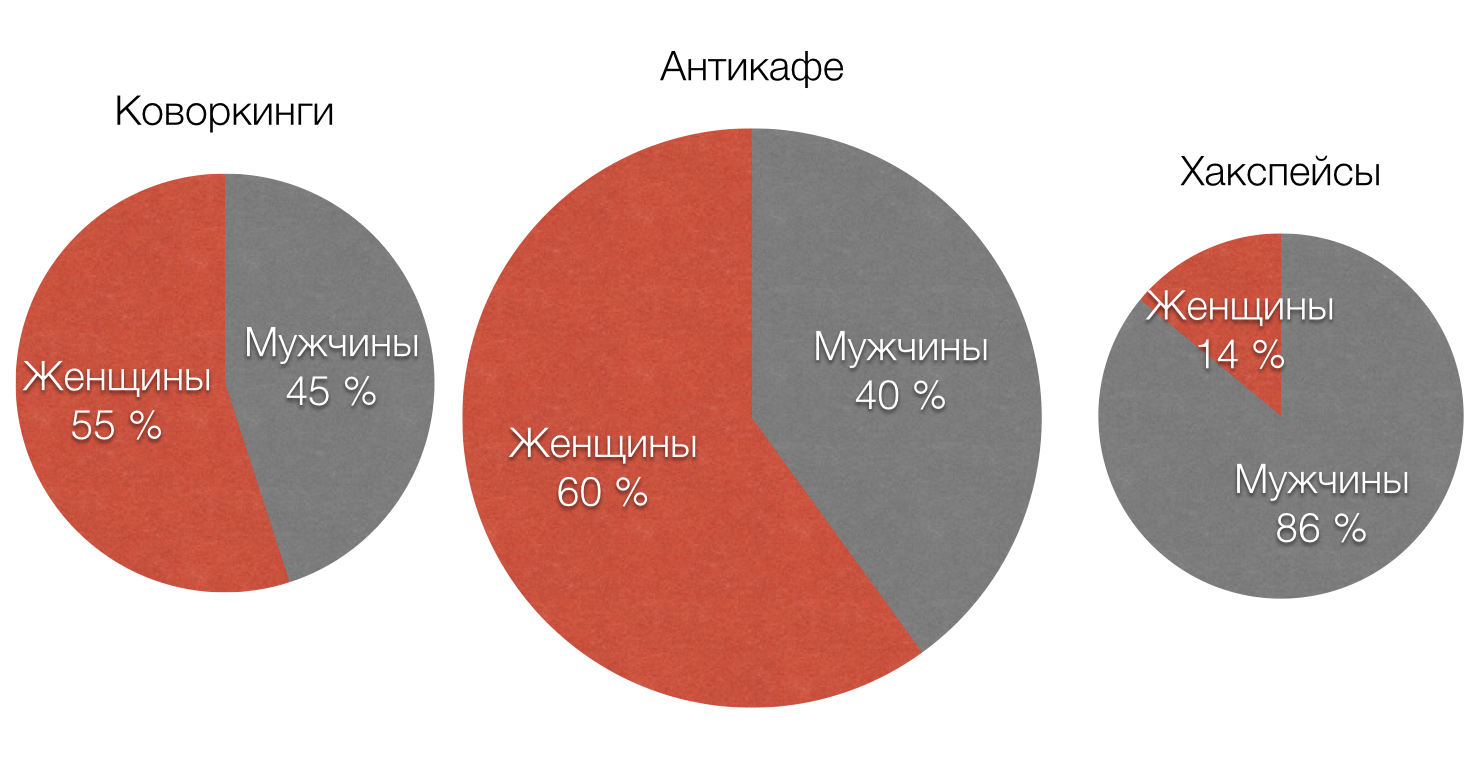Hackspaces, coworkers and antikafe - how many are there, where are they, who goes there?

In preparation for the autumn conference " Garages, Kitchens, and Hackerspaces: Spaces and Narratives of the New Innovation ", the number of Russian institutions of the corresponding type — hackspaces, coworkers and other anti-cafes — were also counted.
By the way, antikafe is one of the few successful Russian inventions in recent years.
Details, graphics and some history - under the cut.
Story
In 2005, Brad Newberg opened Coworking Space (burnt out) in San Francisco.
In 2008, the Tower was opened in Yekaterinburg, here is a post about the discovery (burned out).
In 2011, Ivan Mitin opened the first Ziferblat antikafe in Moscow (still working).
From this point on, a new era began: the anti-cafe format has gained popularity in the Russian Federation and even slowly goes beyond its limits.
')
As for hackspaces, they always existed in some form - garages, NTM circles and other interest clubs .
Three years have passed
Establishments
Antikafe: 811 VKontakte groups, more than 300 live in total , 90 of them in Moscow and 38 in St. Petersburg.
Coworking: 388 VKontakte groups, live around 100, 20 in Moscow, 8 in St. Petersburg.
Hackspaces: About 20 "flickering" VKontakte groups, live projects - less than ten.
Geography

Everything is expected here: 20% of the establishments are concentrated in Moscow, but the rest are scattered throughout the country, and not only in million-plus cities, but also in small towns. Even in Grozny there is already an anti-cafe next to the House-Print.
Fans / Visitors
Antikafe - 800,000 fans in social networks.
Coworking - 80,000 fans in social networks.
Hackspaces - 4500 fans in social networks.
Demography

See the topmost picture - boys go to hacks, girls prefer anticafe! Typical coworker regulars are 24+ year olds, hackspeys are 22 or 28 year olds, and antikafe are 20 year olds.
findings
Draw your own conclusions. If you have thoughts, why hackers don't “fly up”? - share in the comments!
P.S. The idea is submitted by the Greenhouse of social technology.
Source: https://habr.com/ru/post/364217/
All Articles